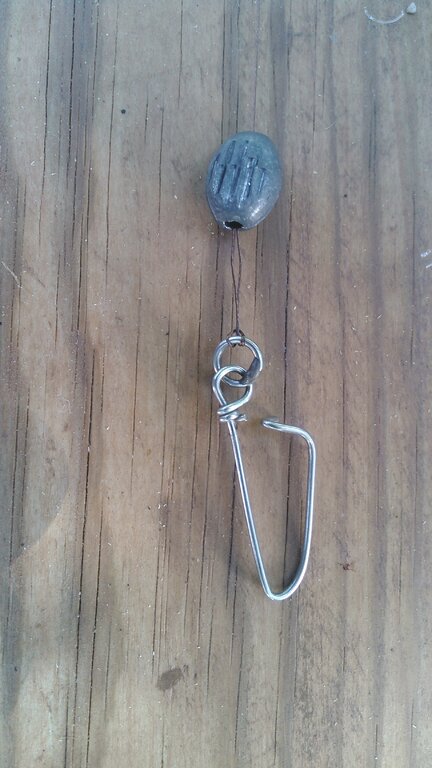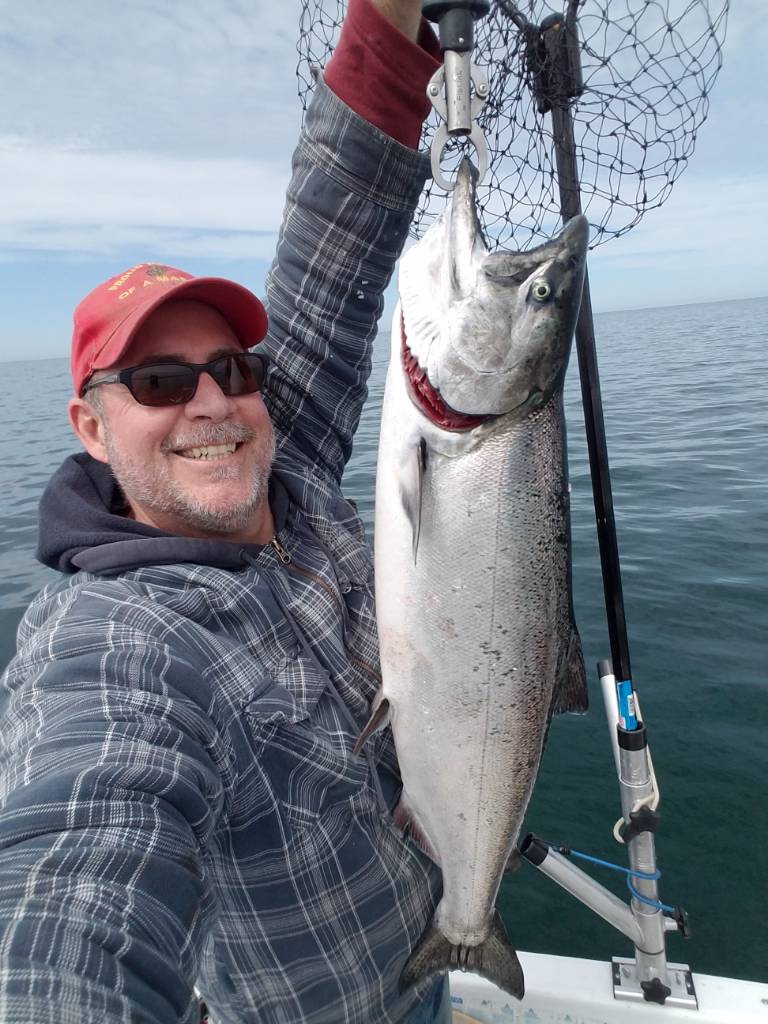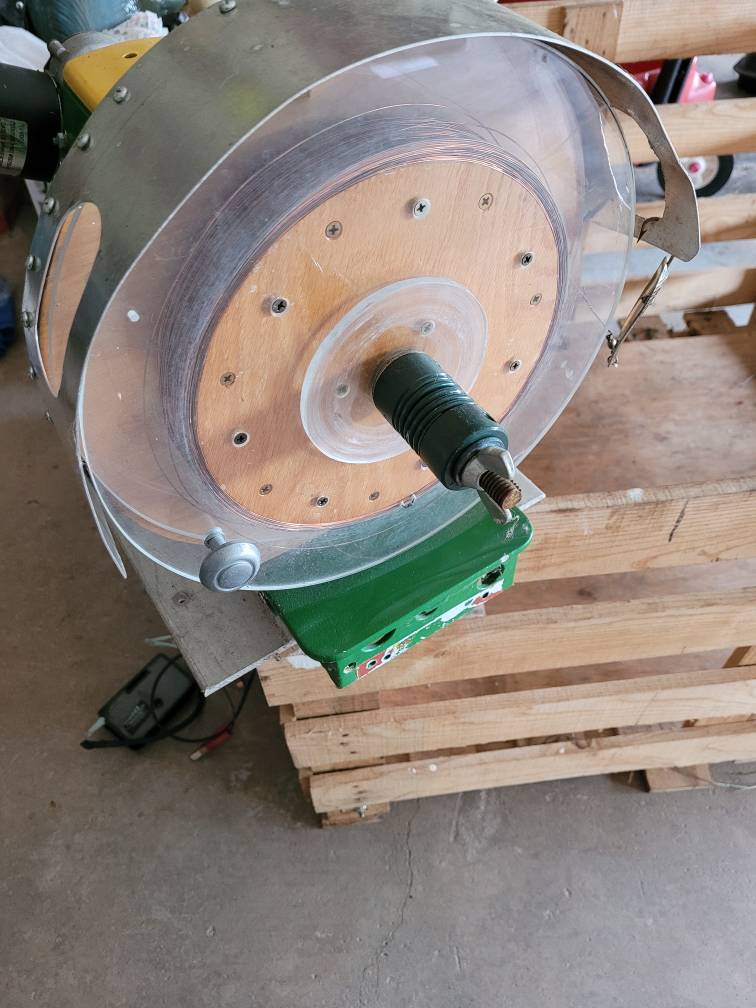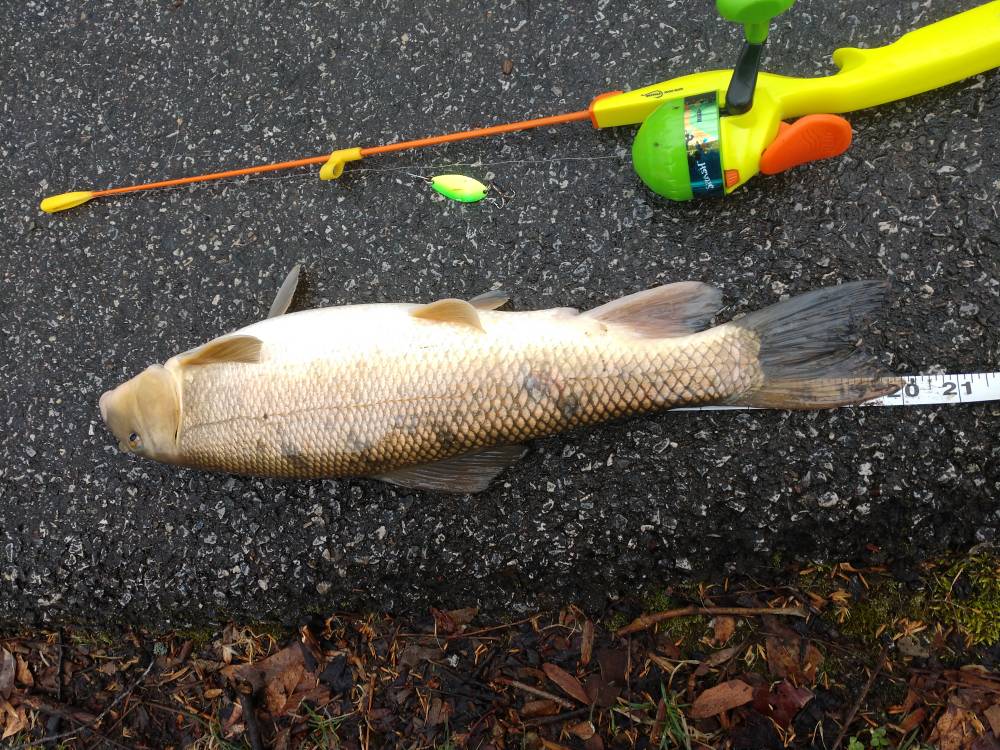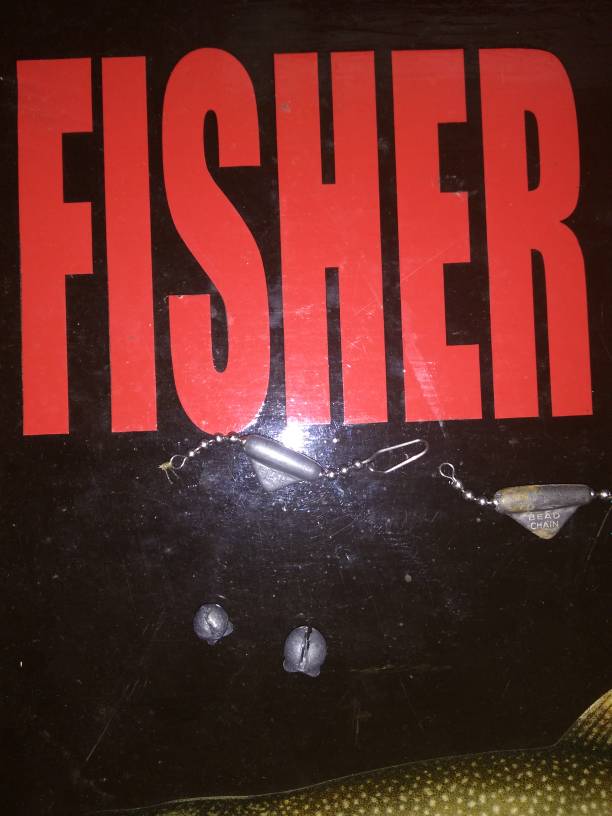-
Posts
1,524 -
Joined
-
Last visited
Content Type
Profiles
Forums
Events
Gallery
Store
Everything posted by TyeeTanic
-
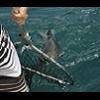
Line twisting around downrigger cable.
TyeeTanic replied to fishinfreak's topic in Open Lake Discussion
Typically happens if you drop the balls down to fast ... think it basically pulls your line almost vertical, and the paddle starts twirling around the cable. Drop them slower and you should be alright. -
I'm not sure I completely understand but it sounds like you put the wire end through swivel once and tie an overhand knot. If so, that means that only 1 wire thickness holds the swivel. In the technique above, the wire is doubled up, so in fact there are two wire thicknesses holding the swivel, it's a much stronger knot.
-
Yes, that loop is tied with an overhand knot. No worries about the kink ... all the charters do this ... I've NEVER had a failure there. The trick is, it doesn't get re-stressed, once it's snug, it doesn't get fatigued over and over, which would cause a break ... it's snug, doesn't move, stays strong.
-
-
yes, fluoro year round, for a few reasons ... one being that it is more abrasion resistant than mono.
-

Down riggers and summer steelhead
TyeeTanic replied to steelfire's topic in Questions About Trout & Salmon Trolling?
Free sliders generally get you 1/3rd the way down to the rigger weight. So 100 ft down, your sliders probably at around 35 ft. If you want to get to 60' down, then you'll have to use fixed sliders. Simply attach to the cable using a rubber band that will snap if a fish takes the bait. This actually helps in most cases, as that line doesn't count as an additional rod. In Ontario, the Regulatory Guidelines for Bait and Gear Restriction, Feb 2006 state: (6) As a provincial standard, the maximum number of hooks attached to the end of a fishing line should be four (4) regardless of whether they are single, double, or treble hooks. I haven't checked if there is a later version. So this means assuming the rules haven't changed (please check yourself), that a free slider still counts as one rod, as long as total hooks including the main line bait isn't more than 4. Not sure if you have heard the term "Cheater Line" ... it's the reason, as it takes advantage of this rule in the book. I don't think using the term cheater line is a good thing though ... it just puts a negative spin on it and sooner or later someone's going to attack it ... free slider or fixed slider is far more neutral and probably won't attract the same attention. -
Hard to say what could have happened as there's not really enough info. So is the suspicion that the oil was low before you took it out? Or do you think the oil leaked somewhere? I'd imagine if it leaked, you would see a slick all over the water ... unless you have a slipped ring. On a boat I had, brand new mercruiser ... the ring on one piston didn't seat properly and as a result I was losing about a quart of oil every time out (4 to 6 hours). I had to keep an eye on it, until they eventually replaced the engine. I'm assuming this is an older engine and you had no issues last season? When the mech says it's low in oil, how low? Can you check for yourself ... just pull the dipstick (in fact this should be part of your pre-start routine anyhow, especially for a new boat). As you become more confident in the boat, you should still check oil, but maybe less frequent (once per every 4 trips??). Also, didn't you get any engine temp issues? Is your raw water impeller working okay, you have coolant pressure? I hope you find the problem ... is the engine done or can it be fixed?
-
You can easily pull 4 dipseys without boards. 6 is possible, but I wouldn't do it. I guess I'm thinking I would never put all my eggs in one basket. Let me explain ... I would never have a situation where we had all my rods as dipseys. I'd always want something else in the mix like rigger lines or long lines (copper/lead). As you know, conditions change from early morning to afternoon ... and you never know what the fish will switch to. Plus there's a strategy ... have the riggers (weights) draw in fish ... then they fall back to dipseys and then to long lines ... But if you do want to try this ... I wouldn't do it with inline boards, that is suicide ... if you have to retrieve that rod, it will be very difficult to pop the dipsey until that board is in the boat. That's gonna need some serious muscle power to pull the board and closed dipsey in at the same time. I'd only do that with big boards off the outriggers.
-
I've heard of it, but I still don't understand what the advantage is.
-

Down riggers and summer steelhead
TyeeTanic replied to steelfire's topic in Questions About Trout & Salmon Trolling?
Yup, free sliders are the way to go for steelhead. -
-
-
Scotty down rigger clip ... just wrap the excess wire around the handle and duct tape it in a position that it reaches and keeps the very tip of the net as far back as possible. Bass pro does have a custom clip. Basically two parts, one goes on the net hoop and the other on the netting itself. The two connect with a strong magnet. Under the weight of a fish, the magnets release and you're good to go.
-
I guess you'll get a variety of opinions on this, but I see the leadcore and copper setups as more of a stealth setup, further out from the boat. So, to be consistent with that strategy, we would normally use 20' to 30' leaders ... and drop it down to 20# fluoro ... just to give it that extra agility.
-
-
-
Charter is a good way to do it, and I suggest BEFORE you go and spend $100's on tackle. I've wasted more money upgrading tackle as I went up the learning curve, than the cost of a bunch of charters. If you have free time, than yes 2.2 mph to 2.5 mph down speed is good. Make sure your bait is in the right range of depth (staggered), and try slowing down and speeding up. There's a whole bunch to learn about presentations and what lures to use on what lines and at what depths, as well as color and bait type depending on the season, as well as depending on the depth and time of day (or weather conditions). Lots of variables, and that's what a charter will help you zero in on.
-
Wow, someone's grumpy? I guess the question was a bit vague, and I thought he was talking about trolling, which is also sometimes called pulling copper. Sorry to have wrecked your entire day with my response. LOL. Jeez, have a joint and calm down to a panic, BUD. I'm sure you have better things to jump at like Mexican tariffs impacting tequila prices. LOL. Please forgive me God of Fishing.
-
Pulling copper is not too difficult until you have a tangle (with another line) lol. I like using boards to push the copper out to the side, something like Church Tackle Boards TX44. If you have say 300 ft of copper, you would have a backing which is braid line. Let out all the 300 copper, and then some (100 ft) of braid, and clip on the board to let it out. I like using simply baits on copper, like straight lures or meat. The biggest issue with copper is when you have other lines out, especially if another fish hits, and goes over the copper line. That's where care needs to be taken.
-
Already said, but here's more support! 12 lb's will be fine down to 100 ft, but you will be surprised if there's enough of a current just how much cable you'll have to have out to deal with the blow back ... think 140 to 150 ft. If ever you want to get another weight, go to a torpedo probably 13 lb, 15 lb even better if your rigger and gunwale can handle it. The torpedo is streamlined, so you don't have as near the drag as a ball, which helps reduce blowback. As for calibrating the SOG, don't bother, unless you know there is no current (in a marina with a large enough break wall?). The reality is you don't necessarily need to know the exact downspeed, but what works best ... on each morning you'll start at a number (say 2.2 mph) then bump it up for a bit, and then down. All of sudden you'll hit a million fish (haha), and you'll know what speed works. It's about repeating that condition, and each new day, repeating that same procedure.
-
adjust sensitivity up you should see them. Other thing to do is to angle the 'ducer back a bit, although you don't want it too far angled, otherwise you end up with a false reading of the depth (will say you are deeper than what you really are). By the way, the sonar will not tell you how deep your ball is. It will tell you how far the ball is from the 'ducer ... which is not the same thing due to blowback.
-
For a 6 rod setup - Rigger on either side at 80 ft and 100 ft. Dipsey on either side at 60 ft and 80 ft deep. 300 copper (or 10 color leadcore) and 400 copper on boards. For a 4 rod setup - Rigger at 100 ft, Dipsey on either side at 60 ft and 80 ft (and be prepared to switch one wire to another rigger if riggers are firing). One copper 300 ft or 400 ft on a board depending on the temps. For a 3 rod setup, one person ... use 4 rod, but do away with the copper. Don't need to put dipseys on boards.
-
Boards hands down. You would only use inlines if you don't have the auxiliary systems to handle boards. Inlines are a pain when a fish is on. You're fighting the board more than the fish, and often if the fish can outrun the board, you can get slack on the hook and lose the fish. Boards is a much better fishing experience.
-
8.5 ft beam ... I'd stick with 2, or 3 at most ... 4 would be insane with stray currents or wild weather pushing your boat sideways (not wild enough to call it a day, but wild enough to make it fun).
-

Flat lining w/spoons
TyeeTanic replied to Reel Chaos's topic in Questions About Trout & Salmon Trolling?
How fast you going and how deep you want to be? When I started, I would often put a split wring on the end of my mono, and put a single 6 oz weight hooked to that split ring. Then I tied a 8 ft lead of 15 lb or 20 lb flouro to the spoon. You could also us OR16 clips to connect the weight to the line ... then I'd suggest going to torpedo weights. Much better to go this way, in my opinion, here's a good website with connection details and dive charts. TORPEDO DIVERS


